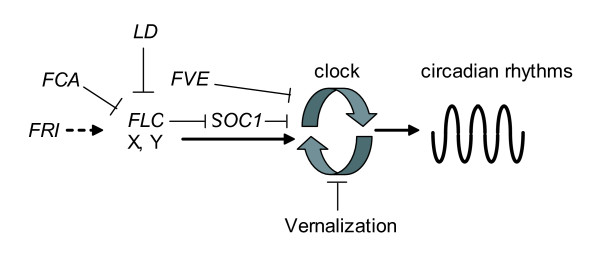Figure 4.

Schematic of FLC's role in the Arabidopsis circadian clock. A schematic of FLC's role in regulating circadian period. FLC function increases circadian period (arrow). This function is marginally enhanced by FRI (dashed arrow) and perhaps mediated in part by repressing (blunt arrow) SOC1, which decreases period (blunt arrow). Flowering-time genes of the autonomous pathway such as LD and FCA maintain shorter circadian periods in part by repressing FLC but with significant contributions via other components (X and Y, drawn with FLC for clarity only). Vernalization also regulates circadian period by an unidentified mechanism. Not all genes of the autonomous flowering pathway influence circadian timing (e.g. FPA, not shown).
